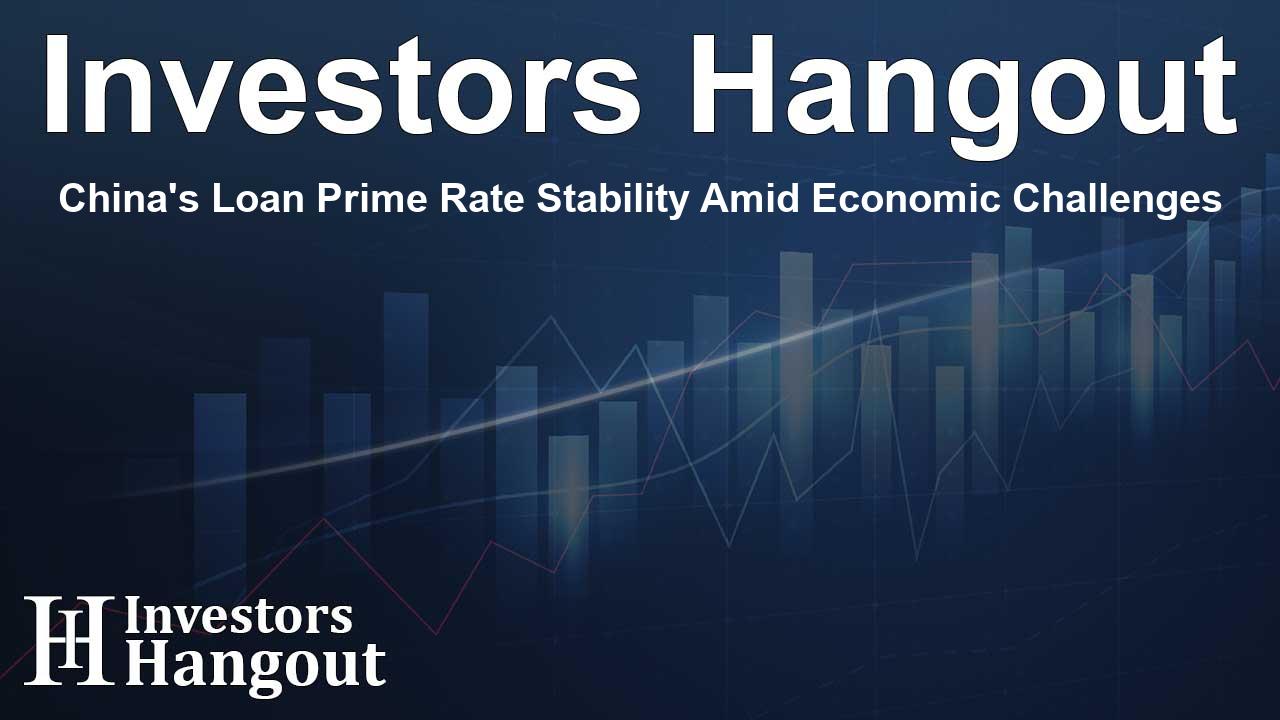China's Loan Prime Rate Stability Amid Economic Challenges

China's Loan Prime Rate Decision: What Does It Mean?
The People's Bank of China (PBOC) recently made a significant decision by keeping its benchmark loan prime rate steady, a move that has caught the attention of economists and market watchers alike. While this stability may seem reassuring, it underscores the ongoing economic challenges facing the nation.
Understanding the LPR: Rates and Their Impact
The PBOC announced that the one-year loan prime rate (LPR) remains at 3.35%, and the five-year LPR, which plays a crucial role in determining mortgage costs, is unchanged at 3.85%. These rates are not just numbers; they influence borrowing costs for businesses and consumers across China.
The Significance of These Rates
By maintaining these rates, the central bank signals its approach to encouraging economic stability amidst a backdrop of waning consumer confidence and sluggish spending. The LPR is set based on input from 18 designated commercial banks, reflecting the current lending environment.
Economic Context: Challenges Ahead
Despite the unchanged rates, the economic landscape in China remains concerning. Recent reports have revealed persistent deflation and a noticeable decline in private consumption, suggesting that the economy is struggling to regain its footing. The PBOC's last adjustment occurred in July, intended to stimulate growth, but the need for further measures is becoming increasingly evident.
Property Market Woes
With the five-year LPR closely linked to the property market, it is important to understand how the real estate sector is faring under these conditions. For nearly four years, China's property market has faced slowing sales and funding difficulties, creating a cash crunch that many developers struggle to navigate.
The Future of China's Monetary Policy
Looking ahead, analysts predict that the PBOC may implement cuts to the LPR in the coming months as more economic indicators emerge, reflecting the country’s ongoing struggles with its economic recovery. The intention is clear: to further ease lending conditions and promote growth.
Potential for Change
Any future cuts to the loan prime rate will be closely monitored not just by financial experts, but by consumers and businesses that depend on stable borrowing costs. A shift in these rates can either nurture recovery or exacerbate current economic challenges.
Conclusion: Waiting for Economic Recovery
In conclusion, while the decision to keep the loan prime rate unchanged may offer short-term stability, it also highlights the pressing need for further action to address the underlying economic issues. As China navigates through these turbulent times, the PBOC will be at the forefront, shaping monetary policy to foster long-term growth and stability.
Frequently Asked Questions
What is the loan prime rate (LPR)?
The loan prime rate is the interest rate that banks charge their most creditworthy customers, and it serves as a benchmark for lending rates across China.
Why did the PBOC keep the LPR unchanged?
The PBOC decided to maintain the LPR to stabilize the economy during challenging times, despite ongoing concerns about deflation and weak consumer spending.
How does the LPR affect the property market?
The five-year LPR is particularly impactful on mortgage rates, which influence housing affordability and the overall health of the real estate market.
What economic challenges is China currently facing?
China is grappling with persistently low consumer spending, deflationary pressures, and a struggling property market that has seen declining sales for years.
What might happen in the coming months regarding the LPR?
Analysts anticipate that the PBOC may eventually lower the LPR to stimulate economic activity as more data on the economy becomes available.
About Investors Hangout
Investors Hangout is a leading online stock forum for financial discussion and learning, offering a wide range of free tools and resources. It draws in traders of all levels, who exchange market knowledge, investigate trading tactics, and keep an eye on industry developments in real time. Featuring financial articles, stock message boards, quotes, charts, company profiles, and live news updates. Through cooperative learning and a wealth of informational resources, it helps users from novices creating their first portfolios to experts honing their techniques. Join Investors Hangout today: https://investorshangout.com/
Disclaimer: The content of this article is solely for general informational purposes only; it does not represent legal, financial, or investment advice. Investors Hangout does not offer financial advice; the author is not a licensed financial advisor. Consult a qualified advisor before making any financial or investment decisions based on this article. The author's interpretation of publicly available data shapes the opinions presented here; as a result, they should not be taken as advice to purchase, sell, or hold any securities mentioned or any other investments. The author does not guarantee the accuracy, completeness, or timeliness of any material, providing it "as is." Information and market conditions may change; past performance is not indicative of future outcomes. If any of the material offered here is inaccurate, please contact us for corrections.